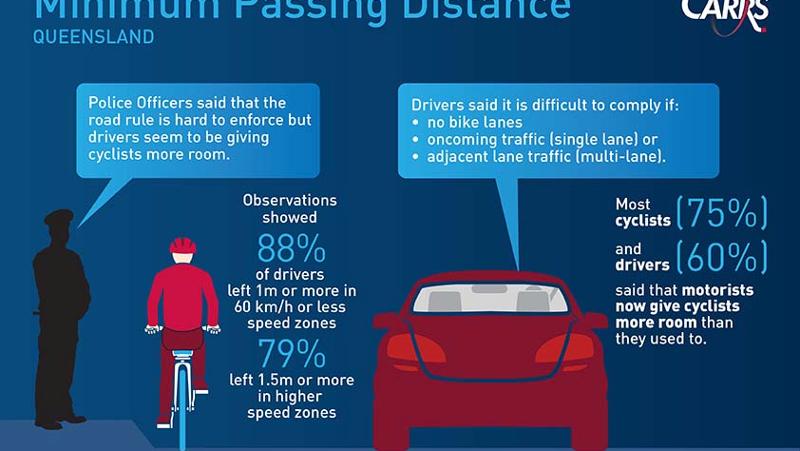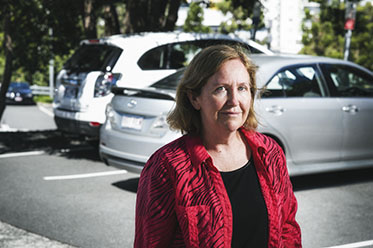
Most drivers are complying with the Queensland Minimum Passing Distance road rule and both drivers and cyclists believe it has made it safer for riders, according to an evaluation of the new rule by QUT’s Centre for Accident Research & Road Safety – Queensland (CARRS-Q).
CARRS-Q director Professor Narelle Haworth said the State Government-implemented two-year trial of the Minimum Passing Distance rule required motor vehicles to leave a lateral passing distance of at least 1m when overtaking in a 60km/h speed zone, or 1.5m when the speed limit was higher.
 “The observational studies revealed that 88 per cent of drivers left 1m or more in 60 km/h or less speed zones, and 79 per cent left 1.5m or more in higher speed zones,” Professor Haworth said.
“The observational studies revealed that 88 per cent of drivers left 1m or more in 60 km/h or less speed zones, and 79 per cent left 1.5m or more in higher speed zones,” Professor Haworth said.
“Survey results showed that most cyclists (75 per cent) and drivers (60 per cent) believe they can accurately judge 1m when being passed by drivers or passing riders, despite research suggesting that drivers find it hard to accurately estimate lateral distances.”
Professor Haworth said the evaluation of the trial incorporated observations of 18,000 cyclists at 17 sites across Queensland, surveys with 3013 drivers and 4332 cyclists, and interviews with police officers.
She said feedback from police raised concerns that some drivers were leaving very large distances when passing cyclists, leading to potential conflicts with oncoming vehicles.
“The effect of the new rule on crashes cannot be measured yet,” she said.
“There is a need for crash data to be monitored in the future to ensure the safety of both cyclists and drivers.
“When crash data for the two years become available we need to look not only at whether there have been fewer cyclists hit by passing vehicles, but also whether there has been any increase in head-on or sideswipe crashes of vehicles who have moved over to give cyclists room.”
Professor Haworth said the evaluation also found that most police agreed with the need for the road rule to improve cyclist safety but reported there was limited enforcement due to difficulties in collecting sufficient evidence for prosecution.
“While camera footage is useful, it does not conclusively prove the distances between motor vehicles and cyclists,” she said.
Professor Haworth said passing speed was not measured in the observational data or in the survey.
“However, if the introduction of the Minimum Passing Distance road rule led to drivers passing cyclists more slowly, then this would be expected to have road safety benefits in addition to any benefits related to greater passing distances,” she said.
“Drivers reported being more aware of cyclists when driving on the road than 12 months ago and most riders and the drivers surveyed had observed motorists giving cyclists more room when overtaking than they used to.”
The RACQ and Bicycle Queensland helped to recruit their members to participate in the surveys.
The full report titled the Evaluation of the Queensland Minimum Passing Distance Road Rule is available, here.
Media contacts:
Sandra Hutchinson, QUT media officer, 07 3138 9449 (Tue/Wed) or media@qut.edu.au
Rose Trapnell, QUT media team leader, 07 3138 2361 or 0407 585 901


